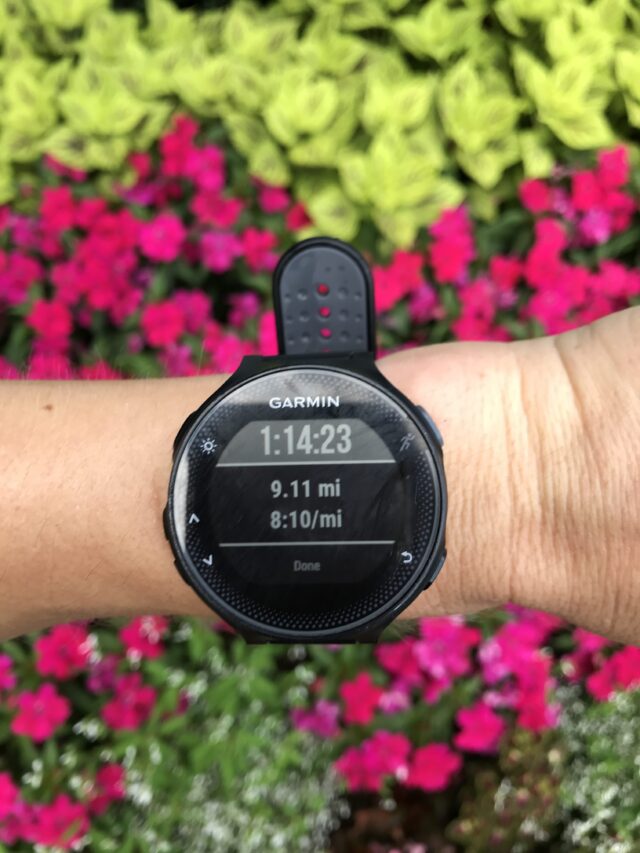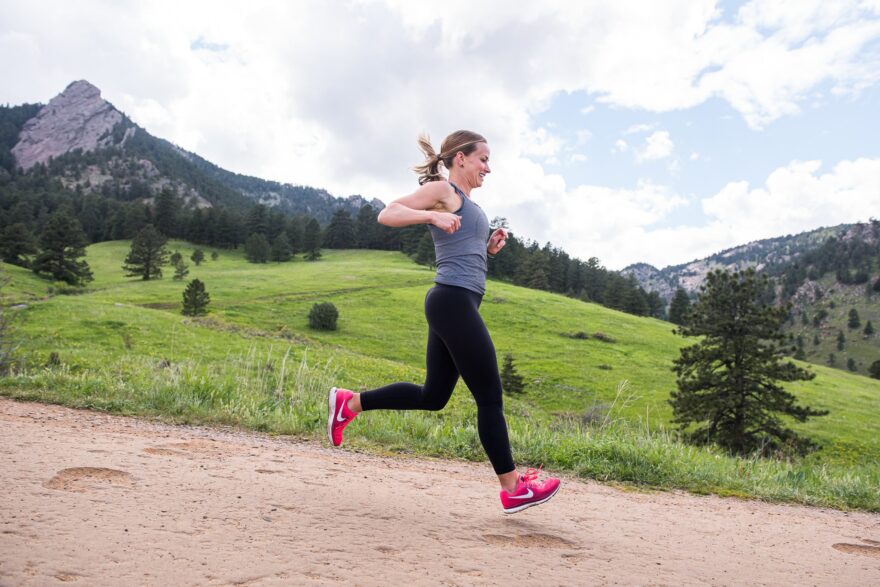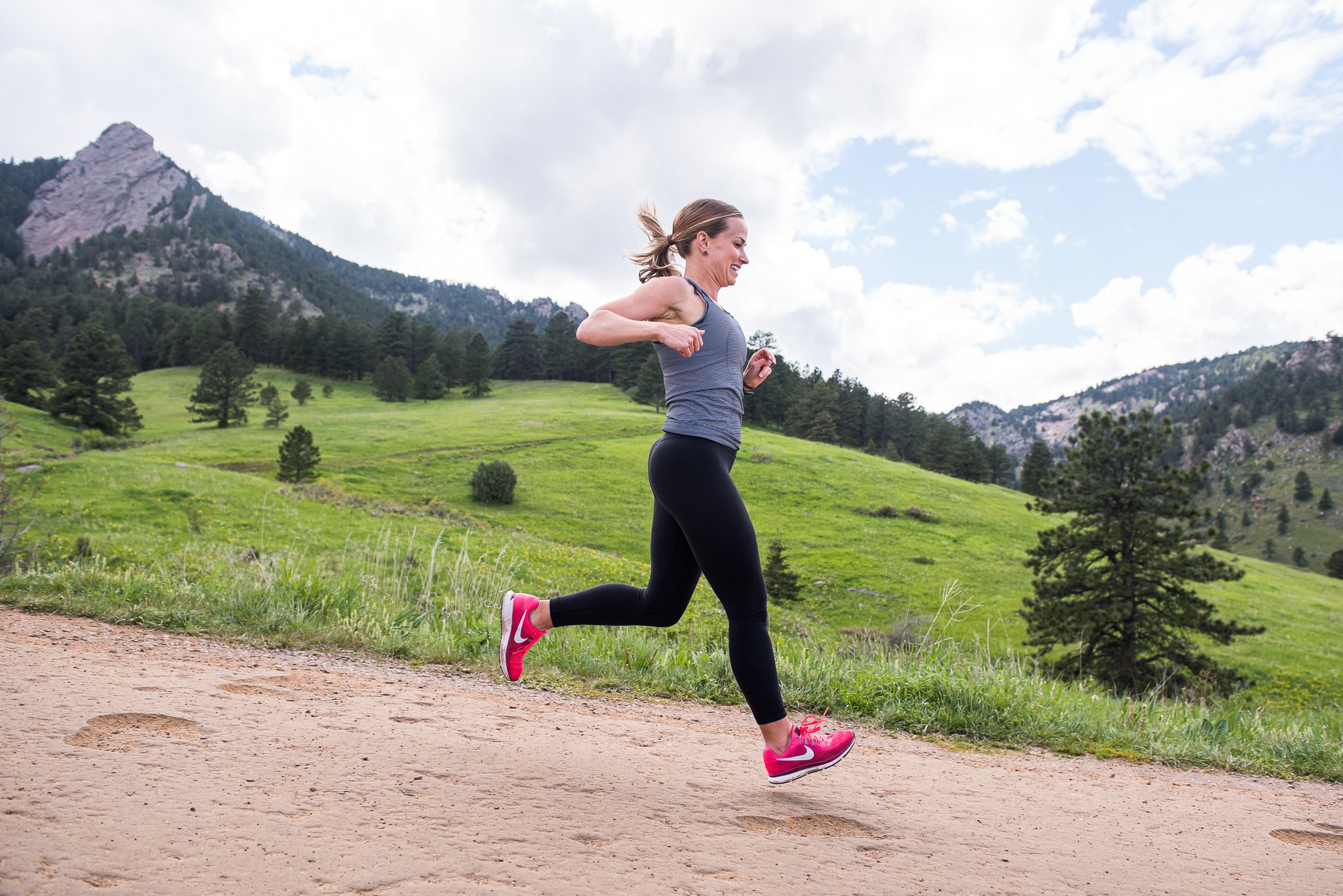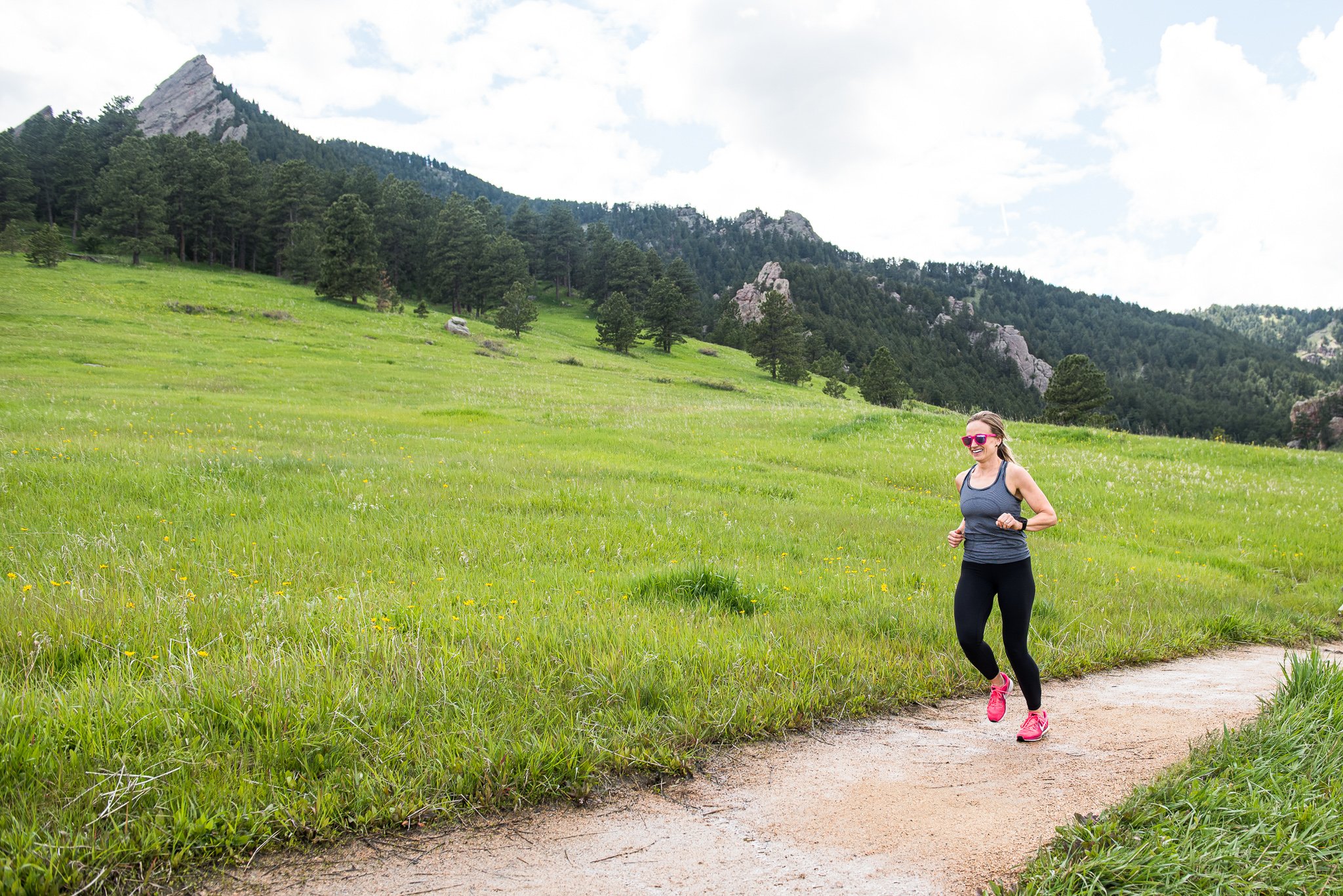


If you’ve ever been to the Rocky Mountains, you know that the air is thinner as you go up the canyon. Maybe you’ve gone skiing out west, and you noticed that you couldn’t get full breaths as easily as you can at home. This is totally normal, and it’s the result of high altitude.
The air around us is made of different molecules, and nitrogen (79.04%) and oxygen (20.93%) make up most of the air we breathe. This doesn’t change, no matter where we are above sea level. However, when you’re at a higher altitude, the volume of oxygen changes. For reference, the oxygen pressure at sea level is 159 mmHg, but at the top of Mount Everest, it’s 53 mmHg. (For the record, I have no desire to climb Mt Everest, ha!)
The reason the volume of oxygen changes is because at high altitudes, there’s less pressure to push the oxygen molecules together. So, that means there are fewer oxygen molecules in each breath we take compared to the breaths we take at sea level. (source)
So now that we understand what’s going on with the air up there, let’s talk about training in high altitudes. If you’ve ever had the chance to run at a high altitude, you know how difficult it can be. But you also know the reward of returning to your normal altitude and feeling stronger and faster than ever. There’s a reason that olympic runners train in the mountains! There’s even a professional running group in the North Carolina mountains!
There are so many benefits to training in high altitudes, so that’s what I’m going to share today. Let’s dive in.


When running at high altitudes, the amount of oxygen getting to the muscles decreases. This initially causes the blood to become less oxygen-rich as it travels to the muscles, which in turn, slows performance down. But since our bodies are awesome, they are able to respond to this low-oxygen situation by increasing red cell volume. And when that happens, your VO2 max increases.
VO2 max, or maximal oxygen consumption, is the max amount of oxygen that a person can utilize during intense exercise. And it’s one of the best indicators of cardiovascular fitness and aerobic endurance. The more oxygen you can use when exercising at high levels, the more energy a person can produce.
If your VO2 max is increasing, your body is improving how it responds to exercise which equals improved endurance.
First, let’s define what consists of high altitude. Anything over 7,000 to 8,000 feet above sea level counts. But, even going up higher than where you live will provide some benefits. So no, you don’t need to go to the peak of Mt Everest to train, but you do need to head to the mountains. I live in Winston-Salem, North Carolina, which is at 970 feet above sea level. When we visit Boone and Blowing Rock, around 4,000 feet, I can feel a difference in my training. And I definitely feel it when I go visit my family in Salt Lake City.
A common training approach among elite runners is to “live high, train low”. This means living at a high altitude and doing some training there, but also making sure you’re doing intensity training at lower altitudes. You want to get the benefits that high altitude adaptations your body makes, but you still need to train with high-intensity, which happens at lower altitudes.
Here are a few ways to train effectively at high altitudes.
Because of the low oxygen levels at high altitude, you’ll have to slow down and train less intensely. Reducing the intensity of your workout will help your body adapt to high altitudes safety AND allow you to maintain hard training back at sea level. When we visit Boone, I love doing longer, slower runs on the trails. Then, I save my speed work for when I’m back in Winston-Salem.
Altitude sickness is a real thing, so it’s very important to let your body adapt slowly as you begin your assent. For example: If you hike to 10,000 feet and spend several (1-3) days at that altitude, your body acclimatizes to 10,000 feet. And then, if you climb to 12,000 feet, you’ll need to acclimatize yet again. (source) If you fly to Utah, try to spend a few days in Salt Lake City before heading up to Park City (which is a higher elevation) if you’re planning to run while traveling.
If you get up to the top of the mountain too soon, you may experience:
And in super severe cases, altitude sickness can lead to high altitude cerebral edema and high altitude pulmonary edema. Be careful, and if you notice yourself feeling the symptoms above, take it slower or don’t workout at all. You’ll also want to consult a doctor.
Ryan Warrenburg, a coach at ZAP Endurance, a professional running group that trains in the mountains of North Carolina, shared, “When doing an altitude training block we try to target 4-5 weeks at higher elevation. It takes about 3-4 weeks for your body to create the full training adaptation we’re aiming for, namely increasing red blood cell production. When you first arrive at elevation your body initially feels pretty good, but then you’ll tend to go through a fatigue cycle before you get that red blood cell boost. So we try to keep the intensity very light the first 2 weeks to account for that initial fatigue phase.”
As a runner, you already know that hydration is key, but it’s even more essential at high altitudes. Thin air makes your breathing more shallow, and this results in more fluid loss through your breathing. The tricky part is that you don’t feel like you’re sweating heavily in high altitude, and that’s because it evaporates so fast.
A good goal is to drink TWICE as much water as you typically do. And keep those electrolytes coming as well.
Did you know that people who train at high altitudes wake up about 5x more often than someone at a normal sea level during the first month or so of training? And we all know that less sleep means less recovery (and more irritability ;)). Plan ahead and get to bed earlier than normal. Here are my 5 must haves for better sleep.
You’ll need to add more time to rest in-between your intervals than you will at sea level. A good rule of thumb is a 1:2 recovery ratio, where, for example, you’re running for 1 minute and resting for 2, and so on.
Warrenburg explained that the ZAP coaches keep the intensity very light for the athletes’ first few weeks at altitude while their red blood cell begin to increase. He noted that most athletes actually feel pretty good when they very first arrive at altitude, but need to be mindful of timing if you’re racing at elevation. “The first 1-2 days are a good window to get in something harder if you need to while you’re still fresh. In fact, if you have a race at elevation the best time to arrive is either immediately before (within 24 hours if possible) or after a couple of weeks. Anything in that 4-5-6-7 day window is generally going to inhibit your performance the most.”
Since your red blood cells and oxygen demands increase so much at high altitudes, you need to make sure you’re monitoring your iron levels. This can also help reduce the effects of altitude sickness. Many Olympic athletes supplement with 120-130 mg of iron a day. They typically divide this into two doses and take it with Vitamin C to maximize absorption. (source) As always, talk to your doctor! Even though I’m not training at altitude very often (and I’m definitely not an Olympic runner!), I have low iron, like many female runners, so I use InsideTracker to keep an eye on my iron levels, among many other biomarkers.
Like we talked about before, the higher the altitude, the more your body works to make red blood cells to carry the oxygen to your muscles. This blood expanding effect can enhance performance in elite athletes by 1 to 2 percent (source). This means you can run harder with less effort.
High altitude training increases your body’s aerobic capacity which increases its V02 max. The higher your VO2 max, the better your endurance
Lactic acid builds up in our muscles after workout, which can lead to muscle fatigue. If you’ve ever tried to run the next day after a hard workout, your legs likely feel stiff and heavy, which is the result of the lactic acid buildup. Training at high altitudes can increase your tolerance to lactic acid, which means it will be able to handle high amounts of lactic acid before your muscles get fatigued. (Source)
I hope this post helps you understand how altitude fitness works, why it’s beneficial, and how to stay safe while you’re training in the mountains. I highly recommend talking to your doctor before making a trip to train in the mountains since there are lots of things to be aware of.
Happy training!
Shop my Running Gear


Leave a Comment